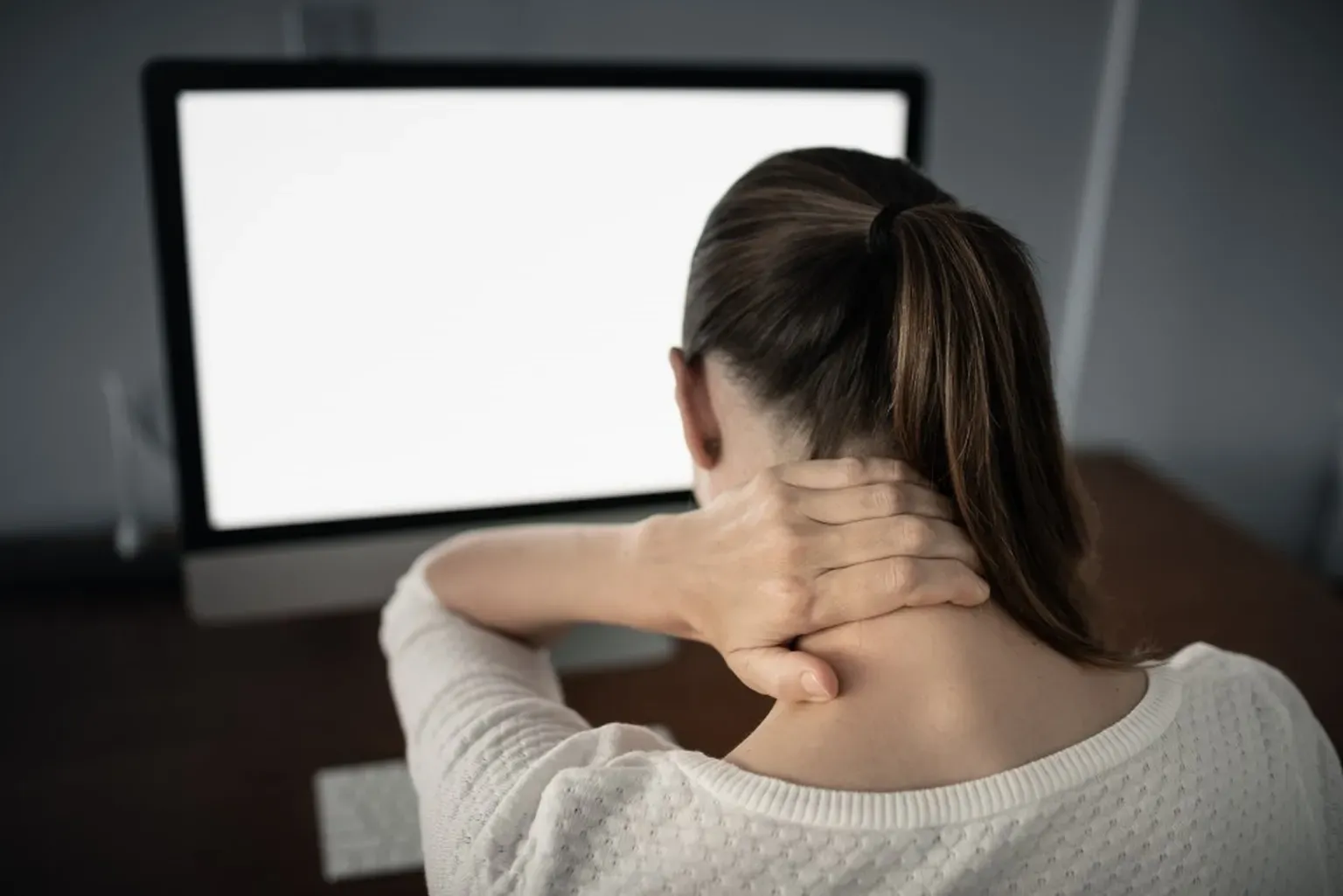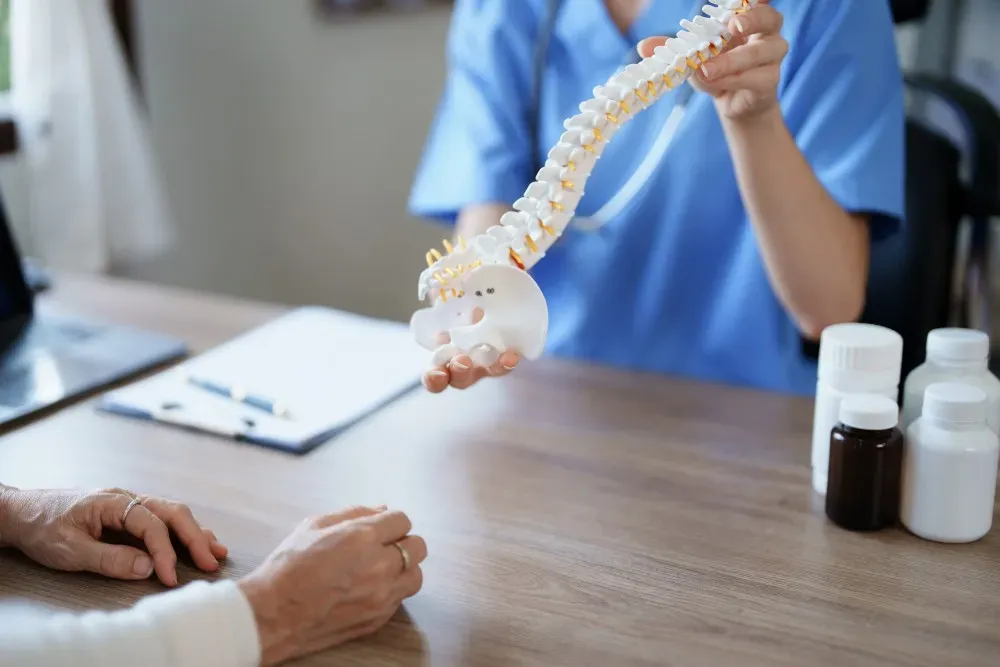Neurosurgery & Orthopedic Surgeons in Jacksonville

What is Sciatica?
Many people recognize sciatica by the sharp, radiating pain that affects only one side of the body.
Many people recognize sciatica by the sharp, radiating pain that affects only one side of the body. Technically, sciatica is not a condition — it’s a symptom that occurs when the sciatic nerve in the lumbar spine becomes compressed or pinched. In many cases, sciatic pain results from degenerative changes in the spine that are pressing on the sciatic nerve.
Below, we’ve compiled a comprehensive guide on the causes and risk factors of sciatic pain, and treatment options you can take to find relief.
THE SCIATIC NERVE
The sciatic nerve is the longest nerve in the human body. It begins in the low back, then branches off down both hips, buttocks, legs and feet. It’s responsible for providing movement to the muscles of the lower legs, including the calves, ankles and behind the knees. It’s also responsible for providing sensation to the back of the thighs, lower legs, ankles and soles of the feet. When something compresses or pinches the sciatic nerve, it can cause pain anywhere along the nerve path.
CAUSES AND RISK FACTORS
Degenerative spinal conditions are the most common cause of sciatica. Furthermore, 90% of cases stem from a herniated disc that causes nerve compression in the spine. Other potential causes include:
- Spinal stenosis (narrowing of the spinal canal)
- Spinal bone spurs
- Degenerative arthritis
- Spinal tumors
- Nerve damage from diabetes
- Increased pressure on the spine during pregnancy
The biggest risk factors for developing sciatica are age, occupation and lifestyle:
- Age-related spinal changes and degeneration
- Occupations that involve lifting heavy loads, or driving or sitting for long periods of time
- Obesity
- A sedentary lifestyle
SYMPTOMS AND WHEN TO SEEK MEDICAL ATTENTION
Symptoms typically affect only one side of the body. The trademark sign of sciatica is one-sided pain that radiates from the lumbar spine, to the buttock, to the back of the thigh and calf. Other symptoms may include numbness, tingling, cramping and weakness in the affected leg and foot.
Sciatic pain varies in sensation and intensity, from mild pain to severe burning pain, or pain that feels like an electric shock. Pain may worsen from coughing, sneezing or periods of prolonged sitting. If it’s very severe, you may find it difficult to walk or stand.
Seek medical attention immediately if you experience the following symptoms: severe pain that’s affecting your ability to function, sudden numbness or weakness in the affected leg or a change in bowel and bladder function. In very serious cases, the nerve compression that’s causing sciatic pain can cause permanent nerve damage.
To make a diagnosis, your doctor will evaluate your medical history and lifestyle, ask you questions about your symptoms and their severity, and possibly order imaging tests to check for a herniated disc or degeneration. He or she will ask you to perform exercises that trigger sciatic pain — squats, lifting a single leg without bending the knee and walking on the heels or toes.
AT-HOME TREATMENT AND PREVENTION
Many cases of sciatica will resolve with at-home care measures. Pain management, exercises and stretching will help relieve pain and improve symptoms. Movement is the key to a fast and complete recovery. Excessive rest and inactivity will prolong symptoms and hinder timely healing, but regular exercise will ease pain and reduce inflammation.
1.) Pain management. Use over-the-counter pain medications like ibuprofen or acetaminophen to control pain and inflammation. You can also find relief by alternating hot and cold compresses on your low back a few times a day.
2.) Exercises and stretching. Short daily walks are a great form of exercise to improve sciatic pain. Additionally, perform light stretching exercises that release the low back and relieve pressure on the sciatic nerve.
There’s a chance you may experience recurring episodes of sciatica. Even after your symptoms resolve, you should continue to take preventative measures at home to reduce the risk of flare-ups.
- Maintain good posture and body positioning while sitting and standing.
- If you sit for prolonged periods during the day, try to get up and move every 30 minutes. Take a bathroom break, get a glass of water or take a lap around your office or home.
- Maintain good form while lifting and bending over. Lift heavy loads using the muscles in your legs, not your back. And never lift a load and twist at the same time.
- Exercise regularly to strengthen the muscles in your core, abdomen and low back. These are the muscles responsible for supporting your spine and keeping it in good alignment.
- Perform stretching exercises every day. For added strength and movement, consider joining a gentle yoga or tai chi class.
Some people use chiropractic care, acupuncture or deep-tissue massages to find relief and release compression.
OTHER TREATMENT OPTIONS AND WHEN TO CONSIDER SURGERY
If you have severe pain and symptoms not relieved by at-home measures, and it persists for longer than a few weeks, then you may need medical attention and treatment. Your doctor may recommend the following treatments:
- Prescription anti-inflammatories or muscle relaxants to manage your pain.
- Physical therapy to improve your muscle strength, endurance, flexibility and body alignment.
- A steroid injection to reduce inflammation around the sciatic nerve. Steroid injections are a short-term, temporary solution.
If you have severe symptoms that fail to resolve with treatment, or if you suffer ongoing weakness, numbness or loss of bowel and bladder function due to sciatica, surgery may be an option for you.
A minimally invasive lumbar discectomy (to remove a herniated disc) or a minimally invasive lumbar laminectomy (to enlarge the spinal canal) can help relieve compression in the spine that’s causing pain. You and your doctor will decide together if you’re a good candidate for minimally invasive surgery.
INTEGRITY SPINE AND ORTHOPEDICS HAS TREATMENT OPTIONS
Integrity Spine and Orthopedics offers several services to treat a range of spinal and joint conditions. We provide general orthopedic care, pain management and minimally invasive spinal procedures. Our team of doctors is board certified and fellowship trained, and they specialize in a minimally invasive approach to spinal and orthopedic surgeries.
If you’re suffering from a spine or joint condition, call us today to schedule an appointment or request a free MRI review.




